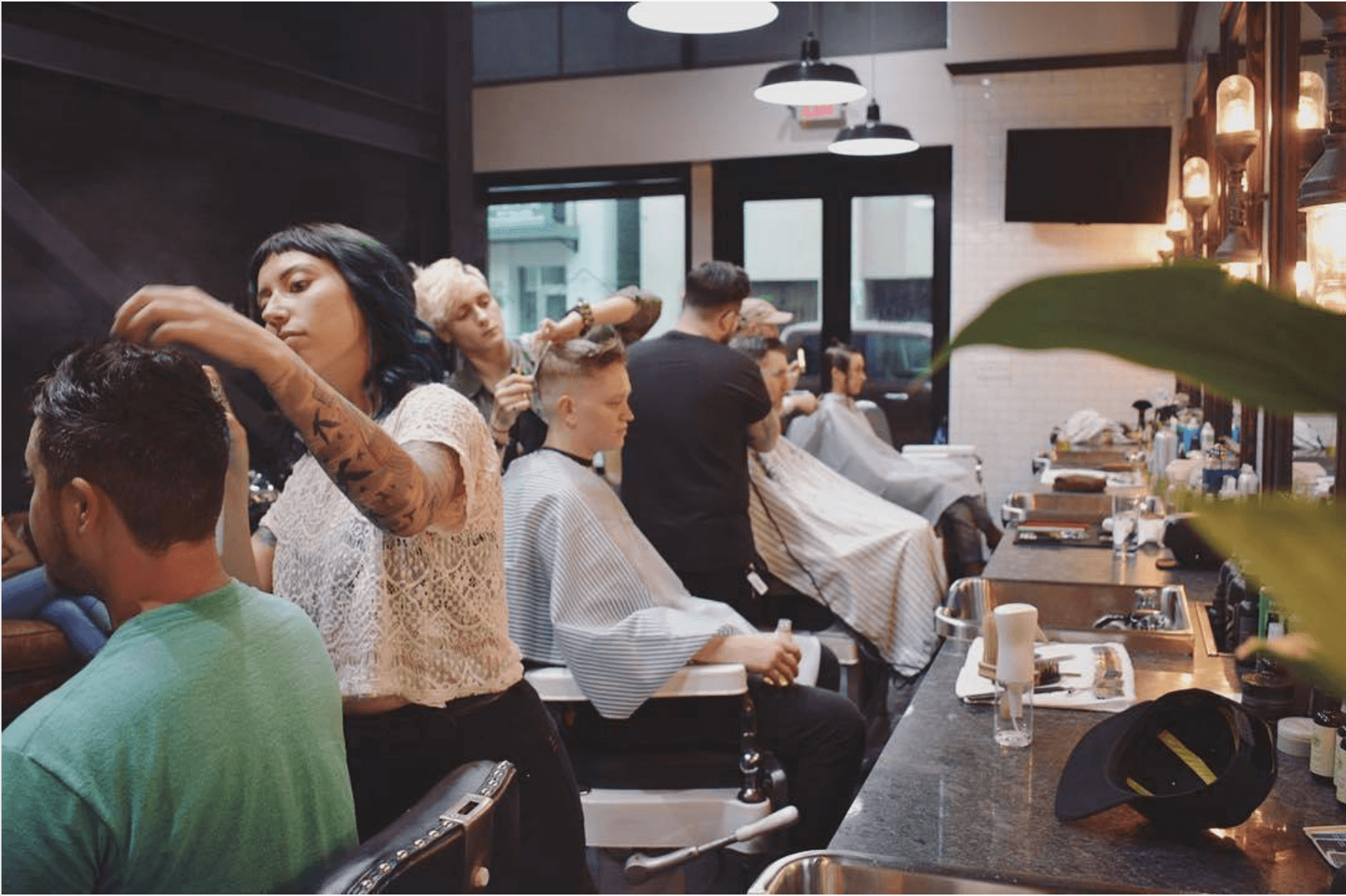By Laurel Nelson, contributing writer with Salon Today
Kurt Kueffner has spent his entire career focused on the business of men’s grooming. From apprenticing with Horst Rechelbacher, to becoming an educator himself, Kueffner has worked for both Aveda and American Crew, growing barbering programs all over the world.
In August, he launched The Grooming Collective with a collection of salons he put together across North America. From Montreal to Los Angeles, these salons are all focused on the prestige men’s grooming industry.
“We’re focusing on classic growth benchmarks—pre-booking, retail per service, new client retention, etc.,” Kueffner says. “Men’s services are different. For example, we’re not looking for a 50% benchmark in color. There are different measures of success for haircutters with a male clientele.”
GROOMING GREAT PEOPLE
The key to growing your men’s business is best practices, Kueffner maintains. And best practices work most efficiently when you hire great people.
“People in the hair business are wonderful at building environments,” he says. “They can make the sexiest salon in the world. But in the men’s market, they haven’t figured out how to attract, develop, promote and retain really great people.”
And to get great people, you need great training.
“In the past 40 to 50 years, we’ve seen an evolution of the business where owners have opened new talent salons, developed great training programs, and standardized technical work,” Kueffner says. “But I can’t name one new talent salon for men in North America. Owners don’t know how to take a kid coming out of cosmetology school and put them in the other side of the beauty business.”
That’s where The Grooming Collective comes in. Kueffner saw a hole in the market—there was no system for stylists who want to develop into six-figure hairdressers in the men’s business. Most salons aren’t equipped to put them on that path the way they are for traditional stylists.
SETTING UP FOR SUCCESS
When salons signup to be a part of The Grooming Collective they’ll be guided by five books that Kueffner wrote with a key component in mind: attracting, developing, promoting and retaining good people long-term.
“It’s about the career path of the hair cutter. You have to show kids (and their parents) a road map.”
The books are broken down into five categories, starting with the career path.
1. Career Path: In this book, the lifespan of a hair cutter’s career is broken down into five sections.
“The first isprimary student,” Kueffner explains. “This is when you’re still in cosmetology school. How is your attendance? I don’t want anyone hired who doesn’t have 95% attendance in primary school because that isn’t going to change.”
Next, the student becomes anapprentice. In this section, benchmarks with algorithms created specifically for men’s business are outlined.
“In the men’s business, you need about 200 unique users (about 50 guests per week) to build a business,”Kueffner says. “You should be there in about a year and a half, and if you’re not, you’re probably in the wrong business.”
He emphasizes that stylists’ salons should be keeping score on the right benchmarks, guiding them along the way.
Eventually, the apprentice becomes a master barber. “The masters have reached benchmarks, can retain guests, their referral numbers are good, etc.,” Kueffner says. “From there, stylists can stay a master barber, continue to get raises, and grow their business.”
Other opportunities like advanced education, teaching back and onboarding new apprentices, learning business fundamentals, and coaching, are also available.
Some masters will want more though, and they will become mentors.
“Mentors are not just onboarding and responsible for quality control, but they also go out into my network and teach in other salons,” Kueffner says.
Finally, Kueffner offers a final step in the career path: profit sharing or equity ownership. “These opportunities for mentors will help grow out your business,” he says.
2. Menu & Protocols: In this book, salons can pick the exact men’s menu they want to put together or just follow the menu Kueffner has created. There are five core items and additional services to pick and choose from as well.
“This creates consistency and standards with extras like hot towel, scalp massage, etc.,” Kueffner says. “It’s easier for owners to coach to service delivery than to technical skills.”
3. Apprentice Training Program: This program starts with the basics and goes through the mechanics, covering everything in between. Owners simply need to follow this linear program, outlined in segments to create successful apprentices and stylists.
4. Coursework Catalog: “It’s just like a college course catalog,” Kueffner says. “There’s Design Tech I, II, III. In those classes there are six haircuts, scripting around pre-booking and consultation, soft skills, and fundamental hair cutting.
The second series of classes (master level) are called case studies,” he adds. “The third level is advanced inspirational classes.”
5. Transcript: “This gives everyone in your salon a really good idea of what your standards are and helps you streamline your education,” Kueffner says. “And stylists can say they got qualified as a master in The Grooming Collective environment.”
Kueffner is also developing software with SalonBiz, as well as a licensed photo library so salons have photos to represent their brands.
“My vision is to create a seamless community so the right people can go work, be developed and have a future.”






